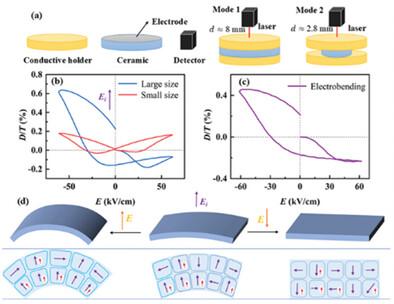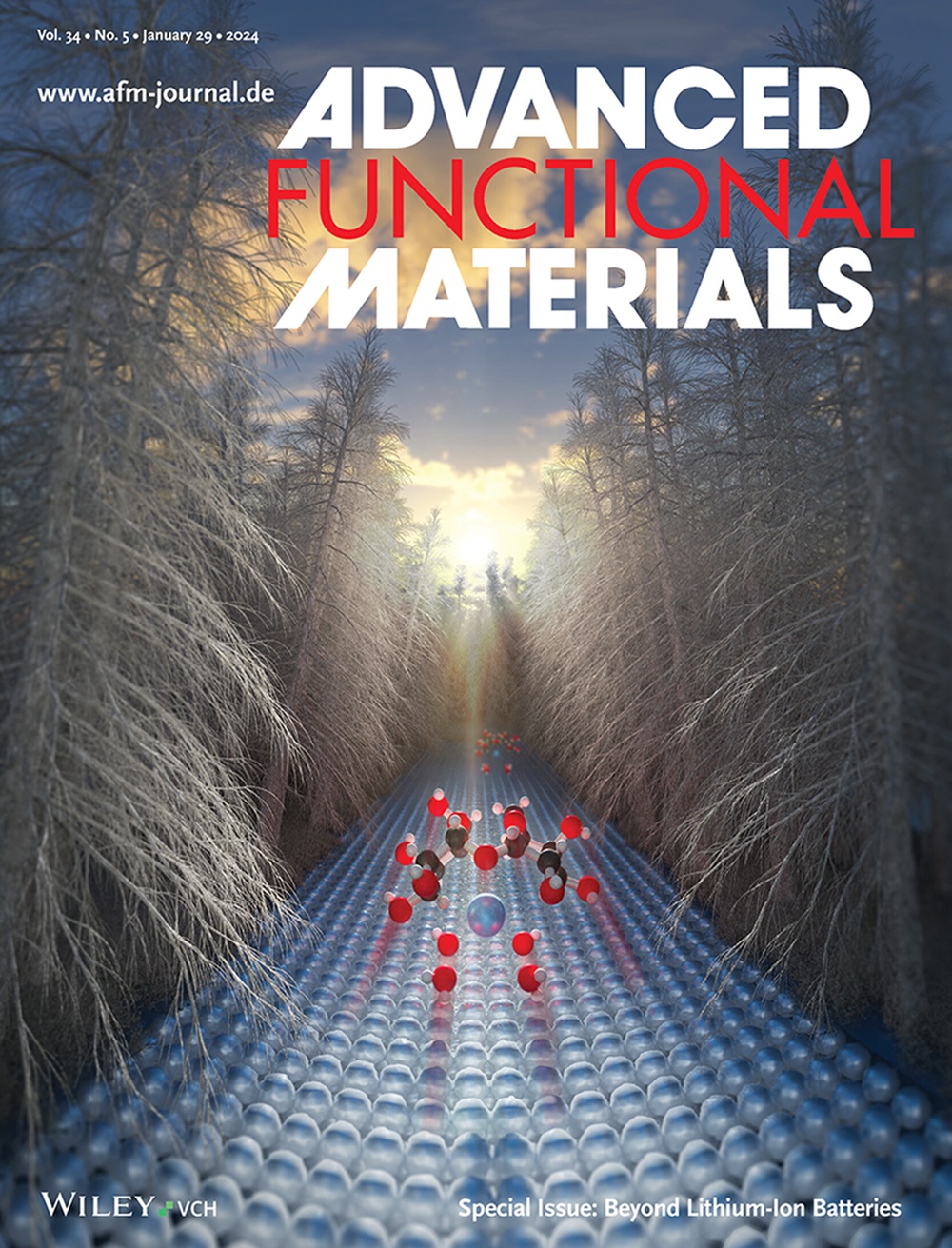Ultrahigh Electrobending Deformation In Poled Sodium Bismuth Titanate-Based Piezoelectric Ceramics by Uneven Defect Distribution
IF 18.5
1区 材料科学
Q1 CHEMISTRY, MULTIDISCIPLINARY
引用次数: 0
Abstract
Recent studies have shown that piezoelectric materials containing defects can exhibit significant electrobending, leading to ultrahigh apparent strain and asymmetric strain-electric field curves. The mechanism of electrobending deformation is particularly important and how to achieve electrobending in ferroelectric ceramics is a significant research topic. In this work, sodium bismuth titanate-based (NBT) ceramics, typical lead-free ferroelectrics, are designed to demonstrate the correlation between the poling process and electrobending. It is found that the internal electric field and ultrahigh electrobending properties can be induced by the poling process. The testing modes are further modified to distinguish the electrobending deformation and electrostrain, revealing that poled ceramics exhibit a bent state. High-temperature poling can induce redistribution of defect dipoles on the bottom and top surfaces of the ceramics, resulting in bending. This work demonstrates that high-temperature polarization is a simple and convenient method for inducing electrobending deformation in defect-containing NBT-based piezoelectric ceramics. It also provides valuable insights for future research on the electrobending phenomenon.

通过不均匀缺陷分布实现极化钛酸铋钠压电陶瓷的超高电弯曲变形
本文章由计算机程序翻译,如有差异,请以英文原文为准。
求助全文
约1分钟内获得全文
求助全文
来源期刊

Advanced Functional Materials
工程技术-材料科学:综合
CiteScore
29.50
自引率
4.20%
发文量
2086
审稿时长
2.1 months
期刊介绍:
Firmly established as a top-tier materials science journal, Advanced Functional Materials reports breakthrough research in all aspects of materials science, including nanotechnology, chemistry, physics, and biology every week.
Advanced Functional Materials is known for its rapid and fair peer review, quality content, and high impact, making it the first choice of the international materials science community.
 求助内容:
求助内容: 应助结果提醒方式:
应助结果提醒方式:


